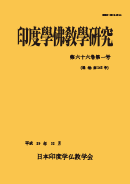Volume 66, Issue 2
Displaying 51-82 of 82 articles from this issue
-
2018 Volume 66 Issue 2 Pages 801-795
Published: March 20, 2018
Released on J-STAGE: January 11, 2019
Download PDF (349K) -
2018 Volume 66 Issue 2 Pages 808-802
Published: March 20, 2018
Released on J-STAGE: January 11, 2019
Download PDF (404K) -
2018 Volume 66 Issue 2 Pages 812-809
Published: March 20, 2018
Released on J-STAGE: January 11, 2019
Download PDF (253K) -
2018 Volume 66 Issue 2 Pages 817-813
Published: March 20, 2018
Released on J-STAGE: January 11, 2019
Download PDF (249K) -
2018 Volume 66 Issue 2 Pages 821-818
Published: March 20, 2018
Released on J-STAGE: January 11, 2019
Download PDF (236K) -
2018 Volume 66 Issue 2 Pages 827-822
Published: March 20, 2018
Released on J-STAGE: January 11, 2019
Download PDF (269K) -
2018 Volume 66 Issue 2 Pages 831-828
Published: March 20, 2018
Released on J-STAGE: January 11, 2019
Download PDF (234K) -
2018 Volume 66 Issue 2 Pages 835-832
Published: March 20, 2018
Released on J-STAGE: January 11, 2019
Download PDF (245K) -
2018 Volume 66 Issue 2 Pages 839-836
Published: March 20, 2018
Released on J-STAGE: January 11, 2019
Download PDF (315K) -
2018 Volume 66 Issue 2 Pages 843-840
Published: March 20, 2018
Released on J-STAGE: January 11, 2019
Download PDF (251K) -
2018 Volume 66 Issue 2 Pages 848-844
Published: March 20, 2018
Released on J-STAGE: January 11, 2019
Download PDF (341K) -
2018 Volume 66 Issue 2 Pages 853-849
Published: March 20, 2018
Released on J-STAGE: January 11, 2019
Download PDF (250K) -
2018 Volume 66 Issue 2 Pages 859-854
Published: March 20, 2018
Released on J-STAGE: January 11, 2019
Download PDF (227K) -
2018 Volume 66 Issue 2 Pages 863-860
Published: March 20, 2018
Released on J-STAGE: January 11, 2019
Download PDF (274K) -
2018 Volume 66 Issue 2 Pages 867-864
Published: March 20, 2018
Released on J-STAGE: January 11, 2019
Download PDF (278K) -
2018 Volume 66 Issue 2 Pages 871-868
Published: March 20, 2018
Released on J-STAGE: January 11, 2019
Download PDF (275K) -
2018 Volume 66 Issue 2 Pages 877-872
Published: March 20, 2018
Released on J-STAGE: January 11, 2019
Download PDF (320K) -
2018 Volume 66 Issue 2 Pages 890-885
Published: March 20, 2018
Released on J-STAGE: January 11, 2019
Download PDF (249K) -
2018 Volume 66 Issue 2 Pages 894-891
Published: March 20, 2018
Released on J-STAGE: January 11, 2019
Download PDF (283K) -
2018 Volume 66 Issue 2 Pages 899-895
Published: March 20, 2018
Released on J-STAGE: January 11, 2019
Download PDF (212K) -
2018 Volume 66 Issue 2 Pages 912-907
Published: March 20, 2018
Released on J-STAGE: January 11, 2019
Download PDF (346K) -
2018 Volume 66 Issue 2 Pages 917-913
Published: March 20, 2018
Released on J-STAGE: January 11, 2019
Download PDF (283K) -
2018 Volume 66 Issue 2 Pages 923-918
Published: March 20, 2018
Released on J-STAGE: January 11, 2019
Download PDF (398K) -
2018 Volume 66 Issue 2 Pages 928-924
Published: March 20, 2018
Released on J-STAGE: January 11, 2019
Download PDF (285K) -
2018 Volume 66 Issue 2 Pages 933-929
Published: March 20, 2018
Released on J-STAGE: January 11, 2019
Download PDF (290K) -
2018 Volume 66 Issue 2 Pages 939-934
Published: March 20, 2018
Released on J-STAGE: January 11, 2019
Download PDF (258K) -
2018 Volume 66 Issue 2 Pages 945-940
Published: March 20, 2018
Released on J-STAGE: January 11, 2019
Download PDF (273K) -
2018 Volume 66 Issue 2 Pages 952-946
Published: March 20, 2018
Released on J-STAGE: January 11, 2019
Download PDF (344K) -
2018 Volume 66 Issue 2 Pages 956-953
Published: March 20, 2018
Released on J-STAGE: January 11, 2019
Download PDF (271K) -
2018 Volume 66 Issue 2 Pages 961-957
Published: March 20, 2018
Released on J-STAGE: January 11, 2019
Download PDF (333K) -
2018 Volume 66 Issue 2 Pages 967-962
Published: March 20, 2018
Released on J-STAGE: January 11, 2019
Download PDF (502K) -
2018 Volume 66 Issue 2 Pages 974-968
Published: March 20, 2018
Released on J-STAGE: January 11, 2019
Download PDF (494K)
